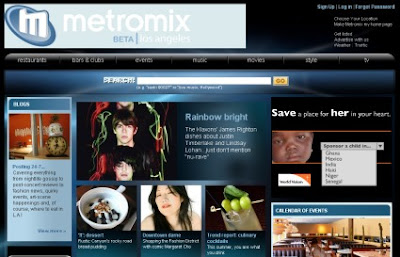The Power Grid: its fundamental
From GigaOM:
"The seemingly invincible web services (not to mention the notional wealth they signify) vanish with a blink of the eye. It was also a reminder, that all the hoopla around web services is just noise - for in the end the hardware, the plumbing, the pipes and more importantly, the power grid is the real show.
According to North American Electric Reliability Council (NERC) there has been a 50% decline in the capital expenditures by utilities over the last 15 years. The underground cables are crumbling.
 The reliable data center/colo facilities have been a distinct advantage for US start-ups, especially the Web 2.0 start-ups. And yet we continue to bet our future on this creaky house of cards. That’s like building a Taj Mahal on quick sand. And that is one sinking feeling - the same one I got in the 100 odd seconds I found myself stuck in the elevator to nowhere this afternoon."
The reliable data center/colo facilities have been a distinct advantage for US start-ups, especially the Web 2.0 start-ups. And yet we continue to bet our future on this creaky house of cards. That’s like building a Taj Mahal on quick sand. And that is one sinking feeling - the same one I got in the 100 odd seconds I found myself stuck in the elevator to nowhere this afternoon."Wondering how long the power would stay on if zombies attacked? I thought so.
From Straight Dope:
"The North American power grid is a classic illustration of a chain being only as strong as its weakest link. As we saw during the blackout of August 2003, a relatively minor event or series of events can, under the right circumstances, bring down large portions of the whole system.
During the August blackout, despite massive non-zombified human intervention, enough parts of the system failed to result in the loss of more than 265 power plants and 508 generating units within a few hours.
As bad as the blackout was, without human intervention to shut down plants safely, balance load, transfer power to different lines, and disconnect salvageable chunks of the system from those that had totally collapsed, it could have been much worse. Quick intervention allowed isolated "islands" of power to remain in service – one large island in western New York supplied nearly 6,000 megawatts and was used to restart the power grid days later. But without humans working to isolate it, that island would not have been formed in the first place.
Bottom line? My guess is that within 4-6 hours there would be scattered blackouts and brownouts in numerous areas, within 12 hours much of the system would be unstable, and within 24 hours most portions of the United States and Canada, aside from a rare island of service in a rural area near a hydroelectric source, would be without power. Some installations served by wind farms and solar might continue, but they would be very small. By the end of a week, I'd be surprised if more than a few abandoned sites were still supplying power."
Well, what about the gird itself? Is Om right about a house of cards?
From IGN:"On average, the grid age in the U.S. is about 50 years. Most of the equipment has an expected life of 30-45 years. And very little has been spent in the last 20-30 years. Between 1975-1999, Transmission spending declined, only inflecting in 2003, post-blackout."
Wow - that's old! So, how come there is not more spending on such a fundamental resource?
From the EIR:
"Then in 2005, the treasonous action of Congress and the Bush Administration opened the flood-gates for still bigger mega-mergers of utilities: They repealed the 1935 Public Utilities Holding Company Act (PUHCA), just as Vice President Cheney's energy task force had demanded.
North American Electric Reliability Council (NERC) spokesman Stan Johnson reports "a 50% reduction in capital expenditures by utilities" over the last 15 years, especially in new transmission lines. He pointed to the deregulation climate in the industry as the culprit.
Under deregulation, Con Ed's own power generating capacity was sold off during 1996-2000 as follows: 2,200 megawatts to KeySpan Energy Corp.; 1,615 megawatts to Orion Power Holdings; 1,450 megawatts to NRB Energy, Inc.; and 1,200 megawatts, including nuclear plants, to the New York State Power Authority (which, in turn, sold them to Entergy in 2002). Con Ed retains only a 7,100-megawatt capacity.
Con Ed did make $500 million in repairs to the distribution system in 1995-99. Then, after a large electric rate increase in 2000, the company made a $400 million investment in 2001, with a few small expenditures since. Over ten years, this is a pittance for the country's largest distribution system. Its capacity, at 7,100 megawatts, is 1,000 megawatts less than it was 30 years ago."
Labels: Power Grid




















